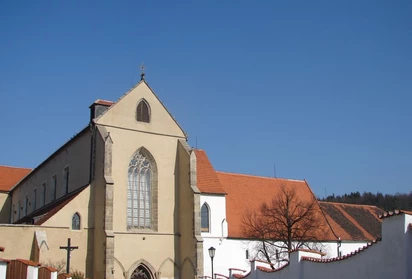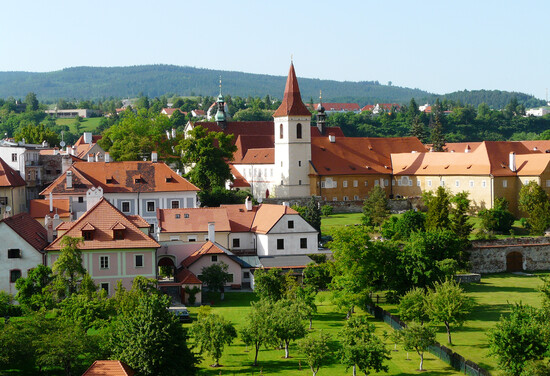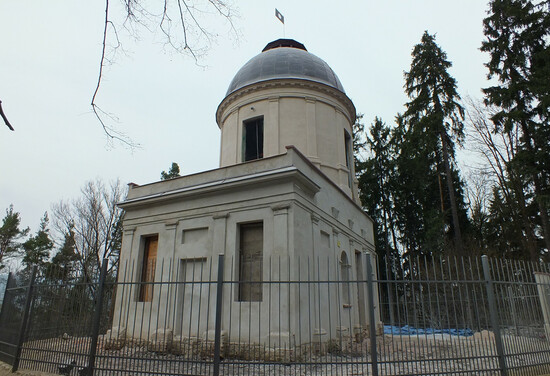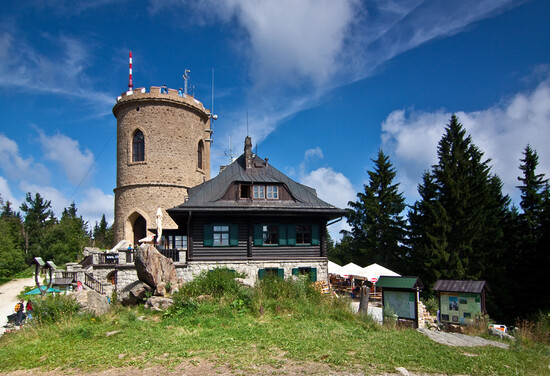- Physical difficulty: Easy
- Length: up to 161 min
- Wheelchair accessibility: No
Zlatá Koruna Monastery
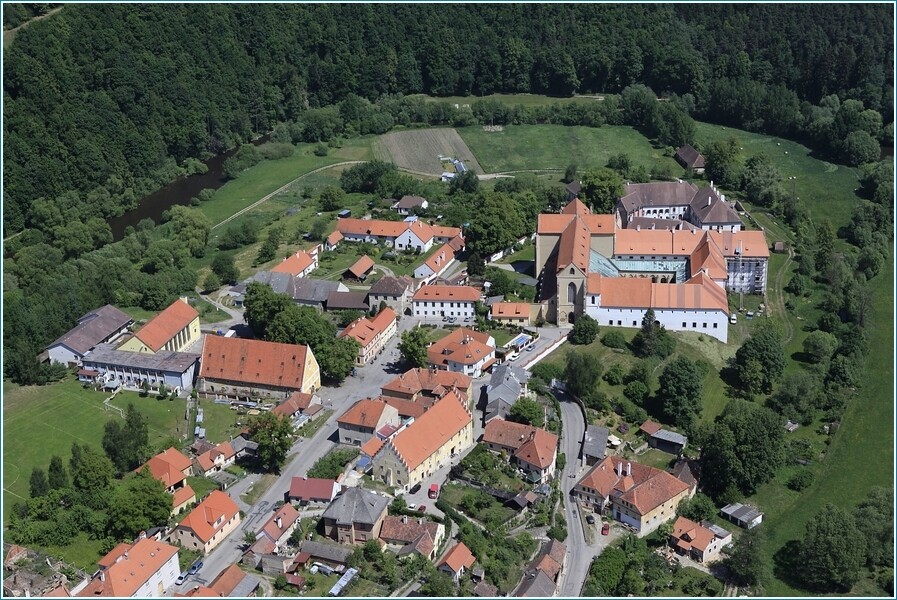
The Zlatá Koruna monastery was founded by the Czech king Přemysl Otakar II. in 1263. The monastery is located about 8 kilometres to the north of Český Krumlov, in the direction of České Budějovice. The former abbey in Zlatá Koruna is the best preserved Cistercian monastery in Bohemia.
Related sites
The Cistercians of the most significant Austrian abbey in Heiligenkreutz were called by Přemysl Otakar II. to the Zlatá Koruna Monastery in 1263 for his support against power of the Witigonen who bulit a powerful dominion in South Bohemia. Přemysl Otakar II., the monastery founder, gave to it an alleged thorn from the crown of Christ that was given to him by the French king Louis IX. the Saint. On Přemysl´s wish the monastery was named after this relic the Holy Crown of Thorns (in the Latin language Sancta Corona Spinea). It has been proven that in the beginning of the 14th century the monastery was renamed Zlatá Koruna (Golden Crown), probably in connection with the plentiful fortune of the monastery. This popular name was also given to the village that was founded near the monastery, but the monastery itself used still its original name. The king presented the monastery with huge estates that were significantly extended with a present of Bavor of Strakonice. The Witigonen soon put a stop to the monastery´s expansion and raided it and substantially demolished it in 1276. However, another intensive construction of the monastery was helped by the support of the Czech king Václav II. During the 14th century the monastery went through its great prosperity and about a hundred villages were founded within the monastery estates during this time. The glory of the monastery faded in 1420when it was raided, demolished and burnt down by the Hussites. During the Hussites wars Ulrich II. of Rosenberg took over all the estates and power of the Zlatá Koruna Monastery. The Rosenbergs did not give back the estates and the situation around the monastery got worse at the end of the 15th century. In 1493 the Czech king passed the Zlatá Koruna estates to the Rosenbergs to their hereditary administration, so he gave them literally all rights over those estates. The number of monks slowly dwindled and their spiritual live became desolated. In the middle of the 16th century the aristocratic patrons wanted to abolished the monastery but it did not happen. Before the Thirty Years´War the situation in the monastery got better and in second half of the 17th century under the rule of the abbot Matěj Aleš Ungar it became one of the exemplary monasteries within the Cistercian province of Český Krumlov. The last abbot of Zlatá Koruna Monastery Bohumír Bylanský was an important person, who estabilished the morality of the monks that had faded as the time went on. He also sorted out the economic situation of the monastery and founded a new exemplary school for the children of the serfs from the surroundings in the monastery. In 1785 the monastery was deconsecrated by an order of emperor Josef II. The Schwarzenberg bought it and rented it to different businessman until 1909. So it happened that as time went on a silk factory, a printed cotton factory, a cloth factory and at the and also a machine factory and foundry were there. During the 19th century the monastery became demolished and dilapidated. It went through a very exacting reconstruction during World War II that literally saved the monastery. In 1940 Gestapo confiscated the monastery from the Schwarzenbergs and it was confiscated again after World War II. by the state. Since 1979 it has been in the administration of the State Scientific Library in České Budějovice. The area of the monastery was in 1995 announced as the national cultural treasure.
